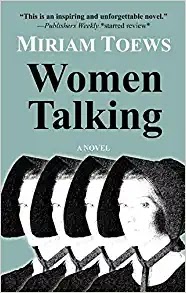Stay and Fight?
Stay and Fight?

The early Sixties would later be known as a hotbed of creative and artistic experimentation—indeed, ushering in an era of radical priests and nuns.
Sister Corita had started a series of masterclasses at Immaculate Heart featuring some of the most ingenious voices in the arts, visual, literature, and music. The lectures and conversations of the Great Man series (notice how this was titled purposely not to stir up controversy) featured Charles Eames, John Cage, Alfred Hitchcock, Buckminster Fuller, and Father Daniel Berrigan. It is this enduring friendship with the Vietnam War critic and activist that doomed Sister Corita.
Los Angeles Cardinal James McIntyre who served from 1948 to 1970 would later be described in a Washington Post obituary as “one of the Catholic Church's most conservative and controversial prelates.” He was a Nixon man, a John Birch supporter, a staunch anti-communist, and even his own allies and fellow priests had to kindly ask him to refrain from using racial slurs when speaking. In part, he sounds much like my father during that time period.
It wasn’t all parades and Mary’s Day at Immaculate Heart College. The 1960s was a time like no other. There was assassinations, urban unrest, Civil Right marches, a focus on racial injustice. What had been before was eroding and who knew what the “after” would look like. All of society was being shaken. The Church was part of this; Vatican II had put church function and routines into the blender. There was a loosening up of rules such as wearing the habit, times for prayer, and how the clergy would interact with the “world.”
The world for women and particularly women in the church was changing. Vatican II and Pope Paul VI was trying to guide the Catholic Church into a new century, into becoming more relevant. In the late 1960s the order would take a fork in the road and dispense with their vows, stop wearing the habit, and reorganize into a nonprofit religious community, governing themselves. The Sisters wanted change.
In this turbulent time Sister Corita Kent made friends with another clergy renegade, Father Daniel Berrigan—the priest poet. He started the Ploughshares Movement during the Vietnam War of which he was an outspoken critic. Sister Corita designed many book covers for his books and in turn integrated his quotes into her art. Though not as explicit in her activism as her radical peace priest and friend, Corita also experienced a reawakening. She knew it was time to take on the messy fight for what she believed in.
“It seemed as though in her art the juices of the world were running over, inundating the world, bursting the rotten wineskins of semblance, rote and rot.” Daniel Berrigan
It was Sister Corita’s art that first made her a target. The bold colors and use of pop art methods brought her to the attention of McIntyre, who in his view felt she did not fit the mold of a respectable nun. Her work was becoming more prominent, and in the winter of 1967 she was featured on the cover of Newsweek – ‘The Nun: Going Modern’, and The Los Angeles Times named her a Woman of the Year. That same year she produced one of her boldest statements against the fighting in Vietnam, stop the bombing. The words in bright blue lettering seemingly falling from the sky into an angry red background. Within the red a prose poem written by a fellow Catholic activist and instructor at Immaculate Heart College:
I am in Vietnam--who will console me? I am terrified of bombs, of cold wet leaves and bamboo splinters in my feet, of a bullet cracking through the trees, across the world, killing me--there is a bullet in my brain, behind my eyes, so that all I see is pain I am in vietnam--who will console me? from the sixoclock news, from the headlines lurking on the street, between the angry love songs on the radio, from the frightened hawks and angry doves I meet a war I will not fight is killing me-- I am in vietnam, who will console me? Stop the Bombing
“She’s not just making work, she’s having a fight through
her work: she’s fighting because she believes in the fundamentals of Christianity.”
*Donna Steele, the exhibition’s curator, Ditchling Museum of Art and Craft in Sussex, UK, The Guardian, “Corita Kent, the pop art nun,” Joanna Moorhead, Apr 2018
Soon, though, it would become apparent that the fight was
wearing on Sister Corita.
NEXT POST—Change is coming, a time to leave





Comments